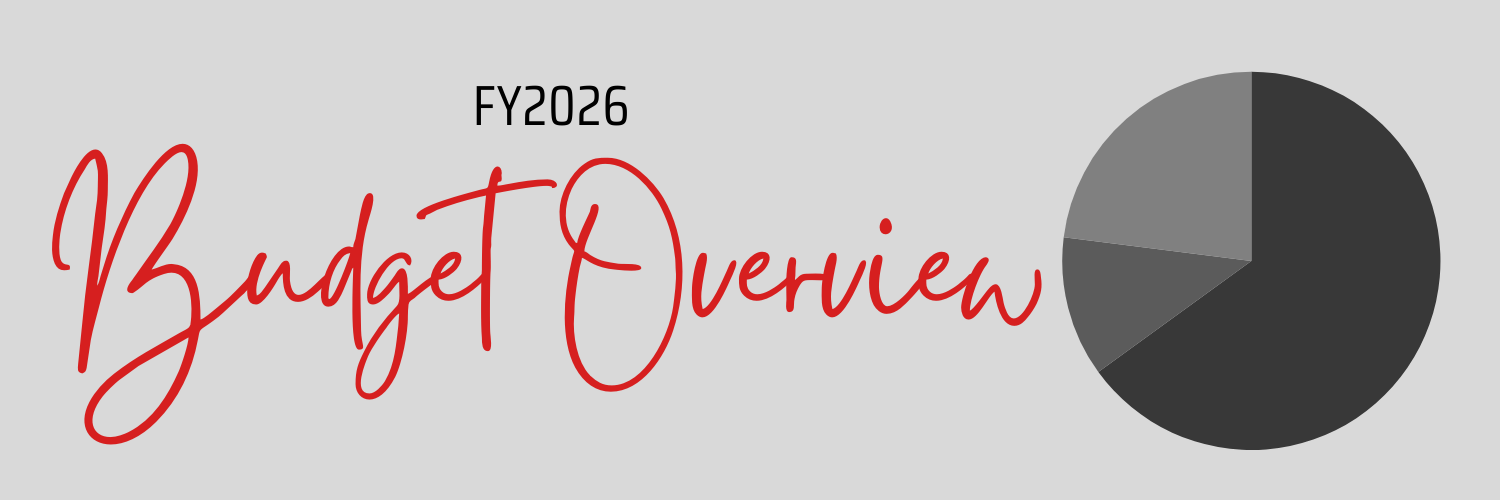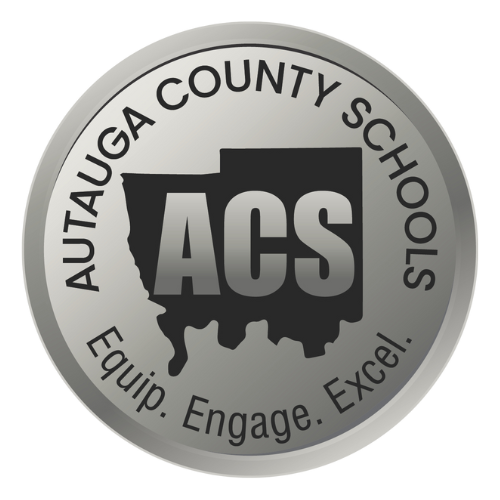
FY 2026 Explanation
Autauga County Schools began the new fiscal year with the 2026 board-approved operating budget of approximately $110 million in revenues and $121 million in expenditures across five key areas:
| Fund | Revenues | Expenditures |
| General Fund | $89,000,000 | $101,000,000 |
| Special Revenue | $16,000,000 | $15,000,000 |
| Debt Service | $2,500,000 | $2,700,000 |
| Capital Projects | $1,500,000 | $1,500,000 |
| Fiduciary Fund | $597,000 | $504,000 |
Please note! The $11.9 million gap is due to supplemental funds received prior to October 1, 2025, with plans to be spent between October 1, 2025 and September 30, 2026.
Budget Revenues
As a public school system, ACS funds the key areas above from three primary sources of revenue: state, federal, and local funds. State funds account for 75% of the total revenue budget. The district's local funding makes up approximately 24% of all revenues and is collected from local funds such as sales tax, community grants, ad valorem, and the Helping Tags tax. The remaining 1% is federal funding derived from the Child Nutrition program and grants. The drop from approximately 12% of the total budget in FY24 and 9% in FY25 is due to the depletion of ESSR funds.
Public school budgets operate much differently from family or small business budgets because of the specific-use categories. If the district is allocated more funding than needed in a particular part of the budget, there is little to no flexibility to transfer the excess funds to another area.
As a public school, funding is based upon Average Daily Membership (ADM), or simply the number of students enrolled and present on the day the ADM is taken for the school year, and is awarded a year in arrears. The FY26 budget was built with funding estimates taken from the ADM count in October 2025 - which was 8,547 students. The majority of state and federal funding is tied directly to the 20-day headcount attendance. In short, if students are not in school for the majority of that headcount window, the district does not receive any funding for them in the subsequent school year. While enrollment was still down slightly from the previous year, the number of Foundation units earned increased because the State recognized Autauga Virtual Academy (AVA) as a school versus a program; therefore, the district earned the additional teaching units based on AVA students from the previous year.
Beginning in FY26, RAISE Act funds will offset grant awards typically earned for poverty, gifted, English Learners, and special education in a three-tiered structure. The district will continue to take advantage of local funding earmarked for education purposes by the Autauga County Commission through SSUT and the City of Prattville as part of the municipality’s sales tax collection.
Budget Expenses
Expenditures for this fiscal year are in keeping with best practices with approximately $70 million allocated for instructional spending and another $31 million earmarked for operations, administrative & auxiliary services. There are no across-the-board raises being provided by the State, but there are supplements for skilled maintenance certifications such HVAC, electrical, and plumbing as well as classified staff with an associate or bachelor’s degrees in a qualifying role. Additional information can be found in the district’s FY26 Salary Schedule.
Currently, Autauga County Schools holds $7.1 million in its Capital Fund. This fund serves current capital projects as well as a reserve for future planned capital expenditures, such as major renovations or large equipment purchases, that aren't suitable for debt financing. At this time, ACS utilizes this pool of funds for ongoing facility maintenance and technology upgrades, as the district's departments are not large enough to maintain the district's buildings and infrastructure, resulting in the need for outside service contracts.
The district holds three bonds that were used to purchase buses and make facility improvements in previous administrations totaling $41,935,158. Debt service payments cost approximately $5.8 million annually.
Budget Challenges
As with any new fiscal year, there are challenges that must be resolved to ensure the district is financially sound and ready to meet the needs of its students, families, community, and future workforce. Declining student enrollment in the Prattville zone with rapid growth in the Pine Level and Marbury communities, use of teaching units to ensure schools have assistant principals and counselors because not all schools earn full-time positions in these areas, a continued increase in special education population that current funding doesn't cover, and supporting a maintenance & technology infrastructure that requires constant updating and outside vendor contract services are the largest concerns moving forward along with these common public school challenges that also plague the district:
- Title II (professional development) uncertainty
- Free meals program eligibility may change
- Underfunded curriculum and employee benefit mandates
- Software and instructional needs often not covered
- CHOOSE Act could reduce district funding by $7,000 per participating student
- Charter schools may impact state and local funding shares
The district's current funding is also not adequate to meet the demands for instructional programming, building renovations, preschool & at-risk programs, and deferred maintenance. In addition, all state revenue currently allocated for capital projects and bus renewal is going straight to pay the bond debt payments outlined in the expenses above. In planning ahead, local revenues are the only flexible funding source to make up the difference; however, with a decline in sales tax of approximately $1,000,000 per year since FY23, there is concern about whether or not future earnings can cover the state and federal shortfalls.
This budget reflects a fiscally responsible plan with strategic allocations, despite funding limitations and declining local revenues. The district remains focused on instructional excellence while preparing for future financial shifts. For additional details on the district's 2026 budget, download the following resources.

